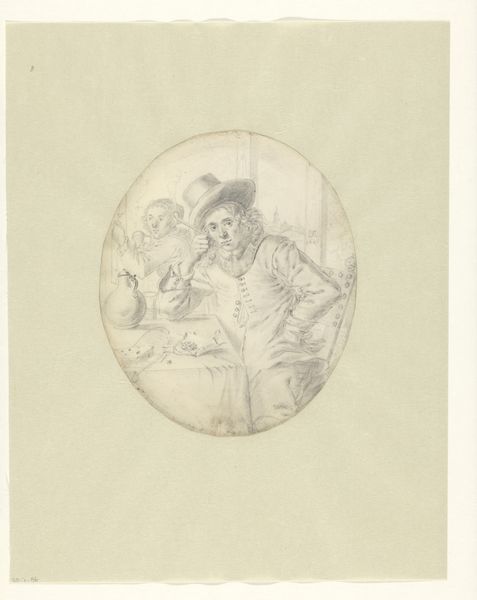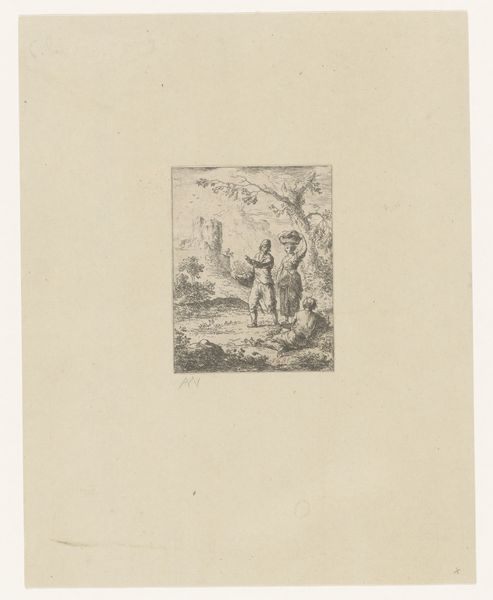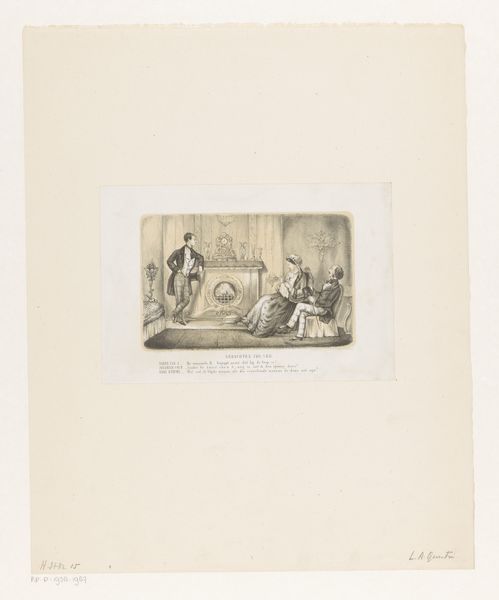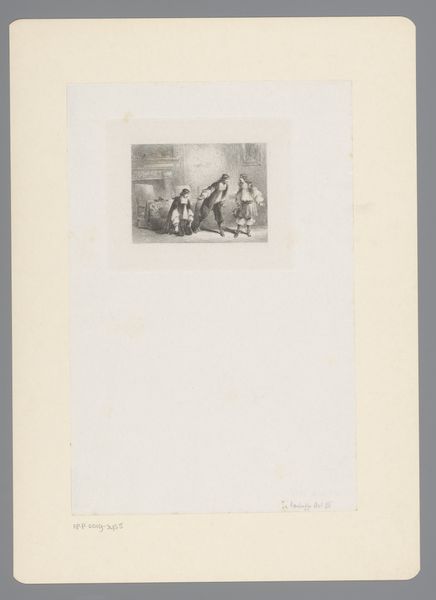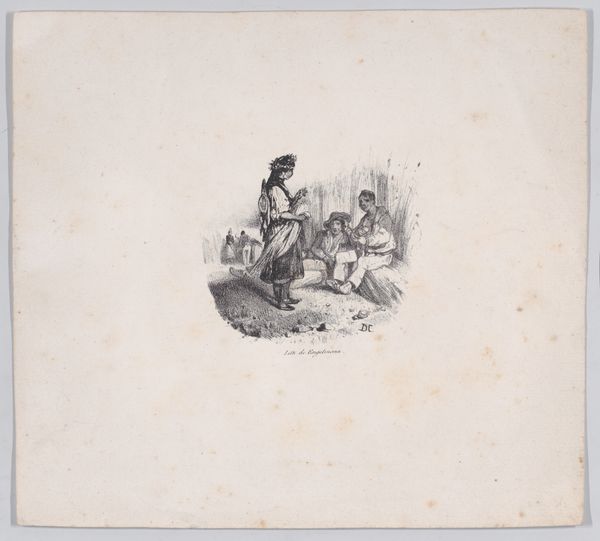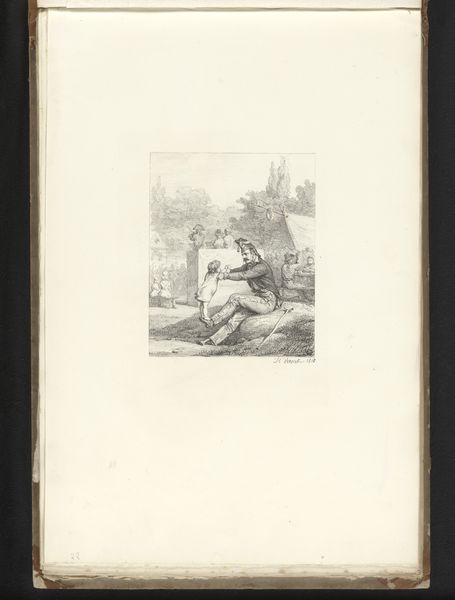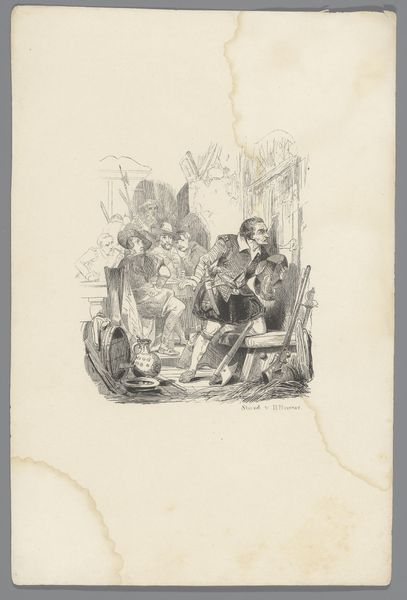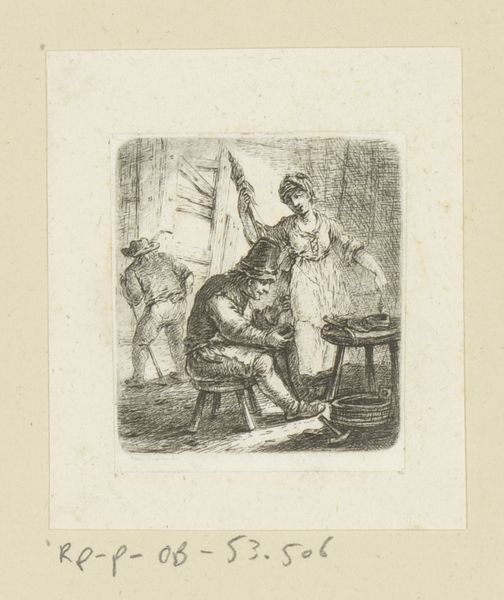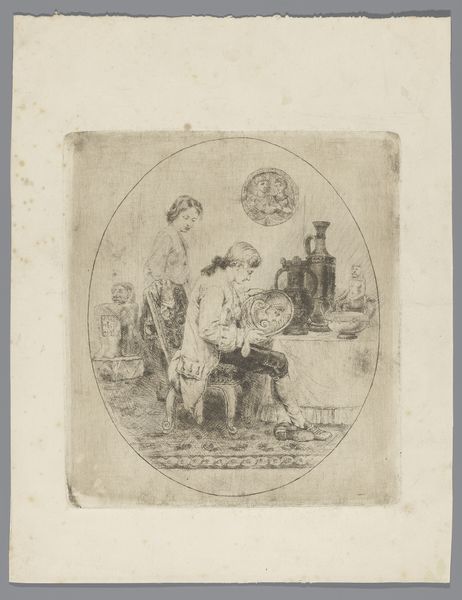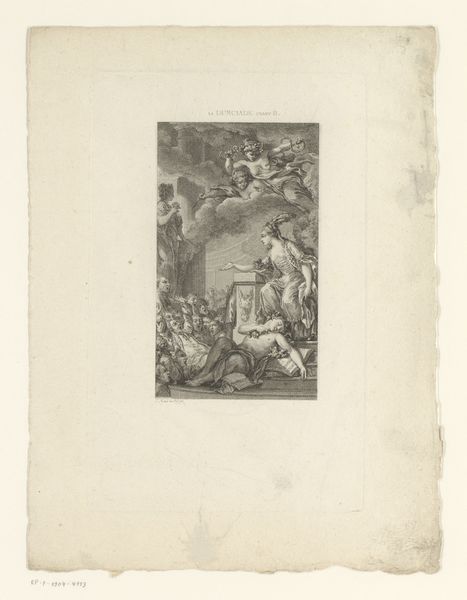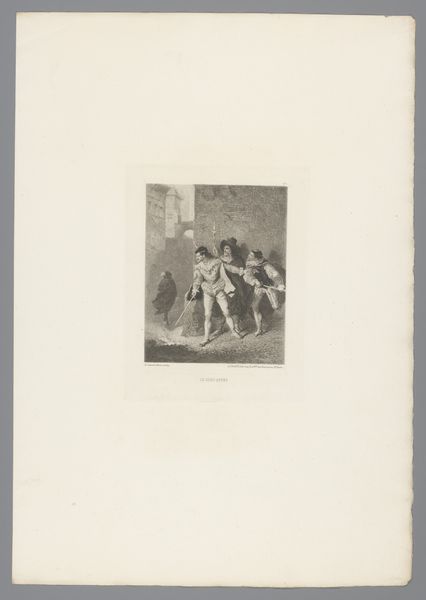
drawing, pencil
#
drawing
#
dutch-golden-age
#
figuration
#
pencil
#
genre-painting
Dimensions: height 183 mm, width 150 mm
Copyright: Rijks Museum: Open Domain
Curator: Here we have Michiel D. van Limborch's drawing, "Chirurgijn," created in 1648 using pencil. It is a fantastic example of Dutch Golden Age artistry. What strikes you most about this genre scene? Editor: The muted palette definitely sets a somber, almost clinical tone. It's intimate but also slightly unnerving. It feels very… unembellished. Curator: That makes sense, considering it's a study of a surgical procedure! The drawing likely served as a preparatory sketch. One has to appreciate the role these studies had on developing the great works of the period. The artist captured a moment of practical, everyday life. Editor: Precisely. The artist focuses on rendering the materials used within the scene. Note how light interacts with the metallic surfaces. Look also to the details of the healer’s tools and attire to gain insight into their material and use within Dutch society. It humanizes labor by putting materials at the center of the composition. Curator: Indeed. And think about the larger socio-political context. The Dutch Republic in the mid-17th century was experiencing unprecedented growth in trade and scientific exploration. These kinds of drawings could even act as early forms of documentation or anatomical records that facilitated knowledge transfer. Editor: A point well taken. Did van Limborch produce this sketch on commission, or perhaps as part of larger artistic explorations connected to institutions or for public access? The art world and civic society are very tightly woven at this point in history. Curator: I'd say, seeing how it feels grounded and observational, there may have been other societal and even market pressures at play for artists exploring and pushing the boundaries of subject matters acceptable by buyers at the time. Editor: A worthy reminder! "Chirurgijn" speaks to the craftsmanship and attention to reality sought after within the art markets of 17th-century Netherlands, which favored verisimilitude for patrons focused on their day-to-day affairs. Curator: Exactly! Van Limborch reminds us how even a simple sketch holds layers of cultural information.
Comments
No comments
Be the first to comment and join the conversation on the ultimate creative platform.
